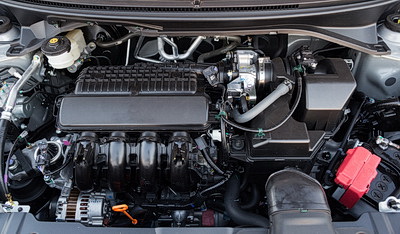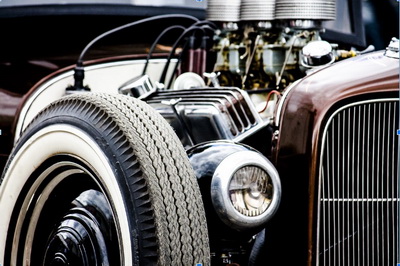What’s Under the Hood of Your Vehicle?

There are typically around 200 parts that need to be maintained and possibly replaced if they wear out. These parts include the engine block, timing belt, accessory drive belts, sensors, camshafts, pistons, rings, bearings, tensioners, idler pulleys, mounts, and oil pumps. The engine block is the core part of a car engine and is typically made from materials such as aluminum or iron. The engine itself is the heart of your car and is what powers the wheels. It comprises several parts, including spark plugs, fuel injectors, valves, and pistons. Together, these parts work to turn the fuel and air mixture into power.
The engine is surrounded by several other components, including the radiator and cooling system, the air filter, the alternator, and the air conditioning system. It’s important to be familiar with all these components and their functions so you can identify any issues that may arise.
While the terminology and components may seem intimidating at first, the basics of how your car functions are relatively straightforward. The engine and related components are usually located in the front of the vehicle, while the battery and other electrical components are usually located on the right front side.
In this blog post, we’ll uncover the mystery of what’s under the hood, and don’t worry. You don’t have to check all 200 parts, but we will give you tips on how to identify and address some of the most common issues that can affect your vehicle.
Common Parts and Components
Here are some of the most common parts that are found under the hood of a car.
- Engine: As mentioned, this is the heart of your car and is what powers the wheels. It comprises several parts, including spark plugs, fuel injectors, valves, and pistons. You won’t be able to see these internal components but if you hear a knocking sound in the engine, it would be a clear sign that something is not right.
- Radiator and Cooling System: This keeps your engine cool by circulating coolant through the system. The radiator is usually located at the front of the car, while the coolant reservoir is usually located near the firewall.
- Alternator: This is responsible for keeping the battery charged and providing electrical power to the car.
- Air Filter: This helps keep the air clean and free of debris and dust.
- Air Conditioning System: This keeps the interior of the car cool and comfortable.
- Fuel Tank: This stores the fuel and is usually located near the rear of the car.
- Belts and Hoses: These are responsible for transferring power from the engine to other components.
- Battery: This provides electrical power to the car and is usually located on the right side of the engine compartment.
Essential Fluids and How to Check Them
Your car requires several different fluids to keep it running properly. It’s important to check these fluids regularly and top them off as needed. The most common fluids include oil, coolant, brake fluid, and transmission fluid.
- The oil keeps the engine lubricated and is usually black or brown. It should be checked regularly.
- Coolant helps to keep the engine cool and is usually green in color. It should also be checked regularly.
- Brake fluid helps to keep the brakes functioning properly and is usually clear to light yellow. It should be checked every few months.
- Transmission fluid helps to keep the transmission running smoothly and is usually red. It should be checked every few months.
General Overview Check

The first thing to check are signs of damage or wear and tear. Pay special attention to the hoses and belts, as these are often the first signs of trouble. The belts should be taut and show no tears or heavy wear. Check the fluid levels as well. If they’re low, there may be a leak in the system.
Look for any signs of corrosion or rust and ensure that all the components are properly secured. Loose bolts or nuts are a sign that something may be wrong.
Be sure to check all the lights, including the headlights, taillights, and brake lights. If any of them are not functioning properly, there may be an issue with the electrical system.
Finally, take a look at the tires. Make sure they’re properly inflated and that there is no visible damage.
How to Check for Leaks
Leaks can be a serious issue, so it’s important to look for any signs of leaking fluids. Start by taking a look at the ground around and under your car, as this is a good indication of whether or not something is leaking.
If you suspect a leak, it’s important to take your car to a mechanic as soon as possible. A mechanic will be able to identify the source of the leak and determine the best course of action. It’s important to also note that some leaks may not be immediately visible, so it’s important to keep an eye out for any signs of dripping fluids or puddles forming under your car.
How to Read Warning Lights
Your car’s dashboard can tell you a lot about your car’s performance. Pay attention to any warning lights that may come on, as these can alert you to potential issues. If you see a warning light, first check the owner’s manual to see what the light may be indicating. If you’re still unsure, take your car to a mechanic to have it checked out.
What to Do If You Find Something
If you find issues with your vehicle, it’s important to take it to a qualified mechanic. What most people do and the best approach is to finding a reliable mechanic is to ask for recommendations from friends and family or to check online reviews. You could also reference Angi (formerly Angi’s List) or other membership-based websites that contain recommendations for quality car mechanics.*
It’s also important to make sure that any mechanics you go to are experienced in working on the type of car you have. Ask for references and make sure you’re comfortable with their level of expertise before entrusting them with your vehicle.
Conclusion
We hope this post has helped uncover the mystery of what’s under the hood of your car. By understanding the basics of car maintenance and understanding how your car functions, you can identify and address the issues that may arise. With regular maintenance and care, you can keep your car running smoothly for years to come.
* Pat Scanlon does not endorse any companies mentioned in this article and is for informational purposes only.